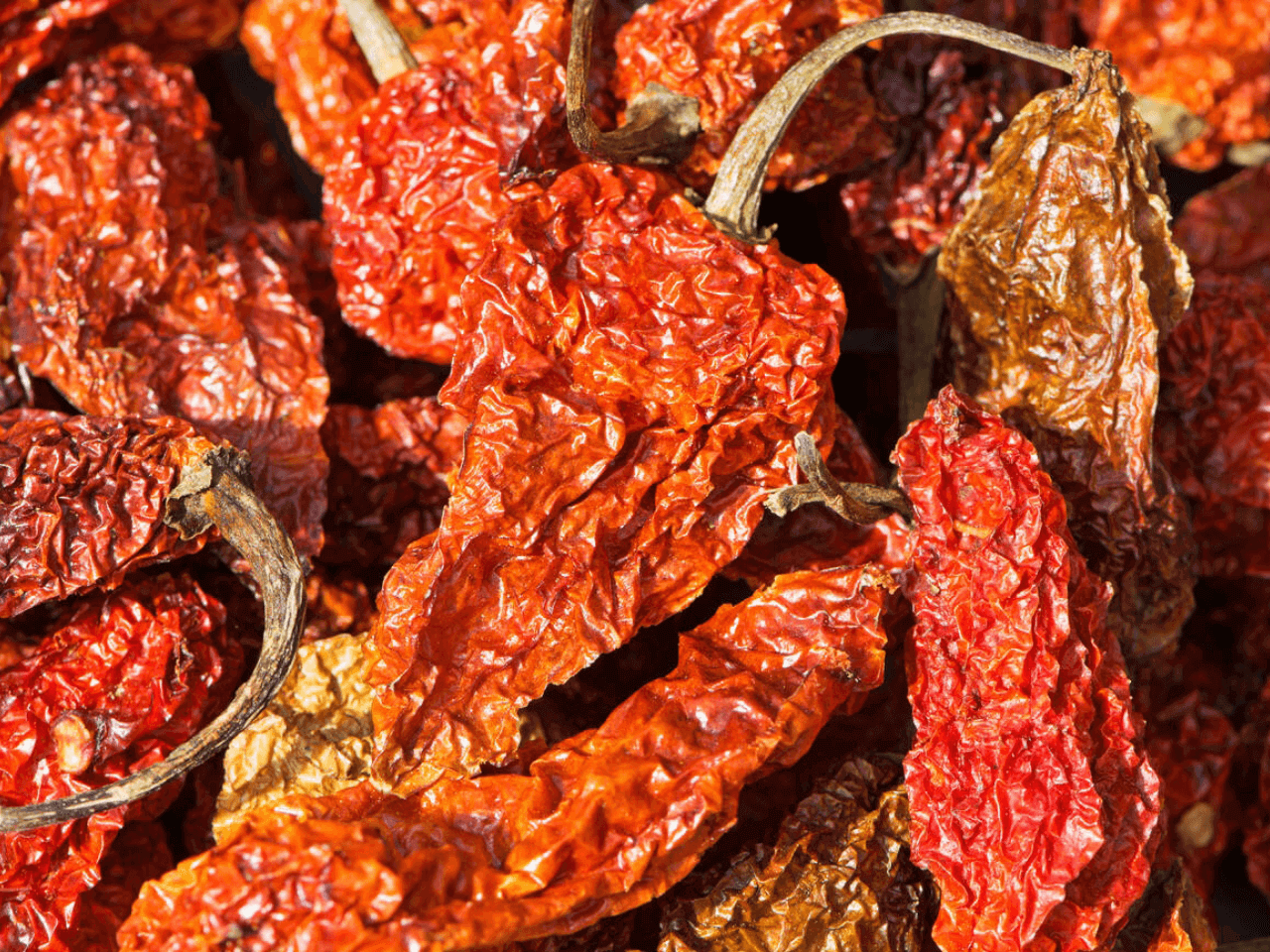Introduction why Bhut Jolokia still matters
Bhut Jolokia more familiarly known as the Ghost Pepper, Naga King Chilli or Naga Jolokia is still one of the most well-known super-hot chillies globally. Its distinctive heat profile and intense flavour make it sought after in hot sauces, powdered chillies, oleoresins and specialty culinary products. For Indian wholesalers and buyers, Bhut Jolokia offers specific opportunities: a niche product with robust local demand, increasing value-added uses, and established cultivation pockets in the north-east that provide the product with provenance and narrative.
Market snapshot: supply, regions and trade signals
Bhut Jolokia is grown mainly in the north-eastern Indian states of Assam, Nagaland and Manipur with minor plantings in the rest of the region. These areas provide the climatic conditions that historically produced the chilli’s signature heat and aroma. Industry trade data and shipping reports show steady, if modest, export shipments of Bhut Jolokia in recent years, driven by specialist buyers for hot-sauce makers, chilli powder blenders and novelty food brands. Concurrently, domestic wholesale prices are highly variable by form (fresh, sun-dried, smoked or powdered), with dry and smoke-dried product attracting higher per-kilogram prices.
Takeaway for wholesalers: production is geographically concentrated (helping provenance claims), exports occur but are niche, and product form (fresh vs dried vs powder/oleoresin) strongly influences price and margins.
Demand drivers in India why domestic wholesale is attractive
- Food-processing and sauces: India’s hot-sauce and speciality-condiment market is expanding rapidly. Manufacturers look for authentic, high-heat ingredients to create differentiated products for domestic audiences and export markets.
- Value-added ingredients: Bhut Jolokia is used for powdered chillies, chilli oleoresin and chilli extracts each offering higher unit values than raw pods. Wholesalers can capture more margin by supplying processing units or by offering semi-processed (cleaned/dried/graded) lots.
- Culinary and novelty markets: Restaurants, chilli festivals and gourmet retailers source ghost pepper products for limited-edition items and premium positioning.
- Medicinal and nutraceutical interest: Capsaicin’s purported health benefits sustain demand for concentrated extracts for niche nutraceutical products.
Trade implication: domestic buyers are not limited to commodity purchasers there’s an ecosystem of processors, brand-owners and specialty retailers ready to pay for quality and traceability.
Wholesale product forms and margins
Understanding product form is essential to wholesale strategy:
- Fresh pods – lower shelf life, suited for immediate processing. Wholesale buyers often include local processors or nearby markets.
- Sun-dried pods – common wholesale product with longer shelf life; pricing is mid-range.
- Smoke-dried / oven-dried – fetch premium prices due to distinct aroma and higher perceived quality. Reports show smoke-dried Bhut Jolokia commanding substantially higher prices per kg than raw or sun-dried product.
- Powder / flakes – value addition reduces weight per price point (processing costs apply) but opens access to retailers and small manufacturers.
- Oleoresin / extracts – highest unit value but require technical processing and compliance; attractive for wholesalers who can partner with extractors or invest in off-take agreements.
Strategic tip: capture more margin by specialising in one or two product forms, building reliable processing partners, and offering consistent grading.
Sourcing and supply chain considerations
- Traceability and provenance: Buyers increasingly prize origin (Assam/Nagaland) and cultivation practices (organic, sun-dried, traditional varieties). Provenance supports premium pricing.
- Seed quality and genetic purity: There are reports that large-scale cultivation and use of non-authentic seeds has affected pungency in some regions; wholesalers should verify seed sources and, if necessary, work with farmer groups to protect variety traits.
- Grading and quality control: Capsaicin content, moisture level, colour and absence of foreign matter determine downstream usability. Implement clear grading and moisture controls to reduce rejection.
- Farmer networks & FPOs: Building relationships with Farmer Producer Organisations (FPOs) or trusted aggregators can stabilise supply and improve traceability.
- Packaging & storage: Use moisture-barrier packaging for dried pods/powders and maintain cool, dry storage to preserve heat and aroma.
Pricing and commercial negotiation
Wholesale prices vary seasonally, variety and processing. Anecdotal wholesale price levels for fresh/dried Bhut Jolokia range from low hundreds to a few thousand INR per kg, with smoke-dried and processed powders at the higher end. Since prices can surge with quality issues or years of poor supply, wholesalers should negotiate contracts with price-adjustment terms (tied to grade or moisture) and partial pre-payments to lock up volumes.
Commercial playbook: provide volume discounts that are flexible, tiered grading, and rapid testing protocols so purchasers can test capsaicin levels and reject non-conforming lots less often.
Value-added business models for wholesalers
- Grade + pack + brand: Purchase bulk, grade and re-pack as retail or industrial consignments under your name higher margin and better buyer recognition.
- Contract farming linkages: Collaborate with FPOs for guaranteed supply and improved price. This also allows claims like “direct from Nagaland farmers”.
- Processor partnerships: Tie up with small-scale drying/powdering units to supply processed product without heavy capital investment.
- Export aggregation: Aggregate small lots into export-sized containers; compliance help (phytosanitary, fumigation, certifications) can be offered as a paid service.
Risks and how to mitigate them
- Quality dilution: Cross-pollination and seed dilution can reduce heat; mitigate by sourcing from verified seed lines and contracting growers.
- Price volatility: Use forward contracts, staggered purchases and buffer inventory.
- Regulatory & export compliance: Keep up to date with export documentation, residue limits and phytosanitary rules; provide buyers with clear documentation packs.
- Reputation risk: Avoid adulteration; maintain lab test certificates for capsaicin and contaminants.
Practical checklist for wholesalers starting with Bhut Jolokia
- Identify reliable sourcing districts and at least two aggregators/FPOs.
- Decide product forms to specialise in (dried/powder/oleoresin).
- Set up grading parameters (moisture, colour, SHU/capsaicin if possible).
- Secure short-term storage with humidity control.
- Build relationships with at least three domestic buyers (sauce makers, spice blenders, nutraceutical firms).
- Prepare basic compliance documents: FSSAI for domestic, phytosanitary and export docs for international buyers.



